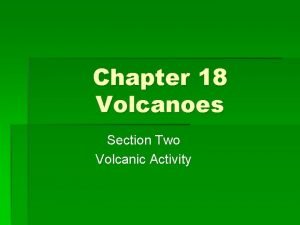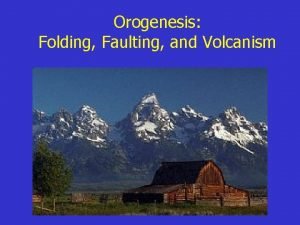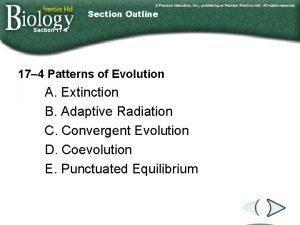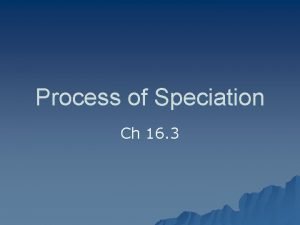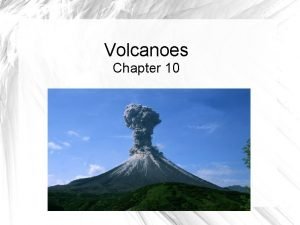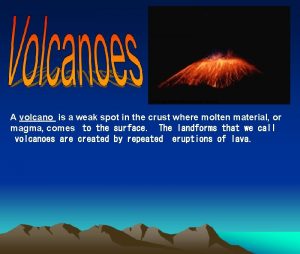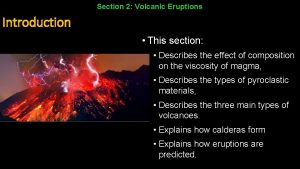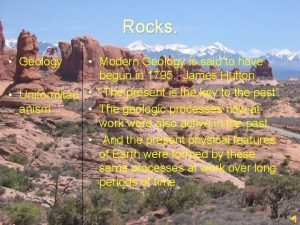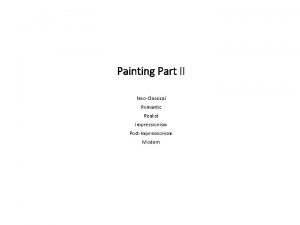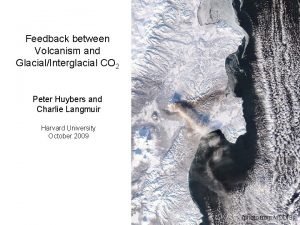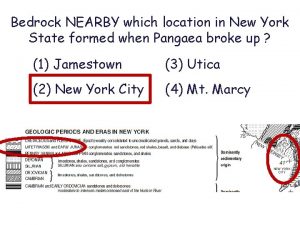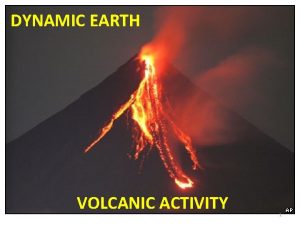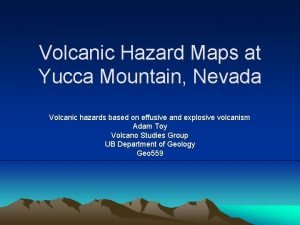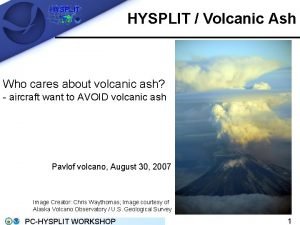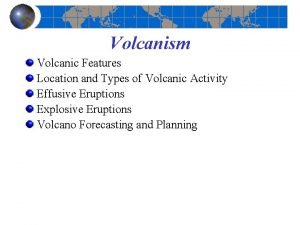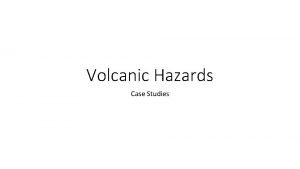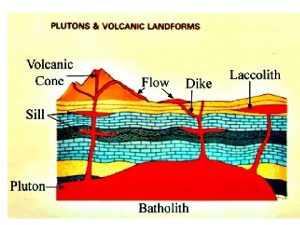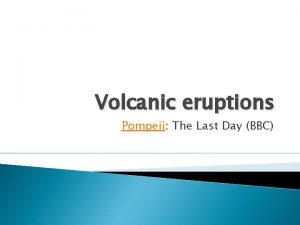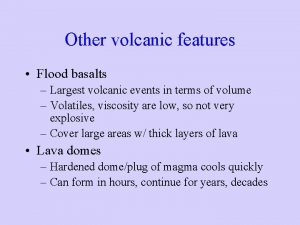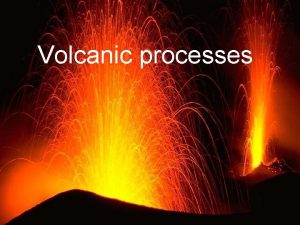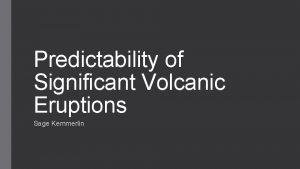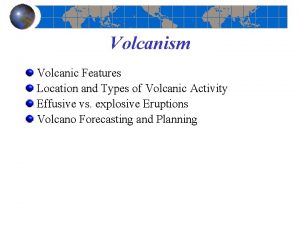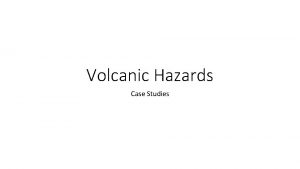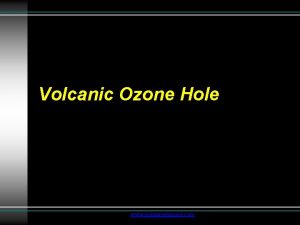Volcanic Activity Chapter 3 Section 2 Pages 93















- Slides: 15

Volcanic Activity Chapter 3 Section 2 Pages 93 -102 S

How Magma Reaches Surface S Created in the Asthenosphere S Will rise through any cracks in rock above S During a volcanic eruption magma rush out, once on surface gases from the magma will bubble out S Just like a bottle of soda when you open it

Inside a Volcano S Magma Chamber S Pocket of magma under the volcano S Pipe S Long tube connecting magma to the earths surface S Vent S Spot where magma will leave the vocano


Characteristics of Magma S Thickness of magma S Thicker the Magma the slower it will move S Temperature of magma S Hotter the magma the more fluid it will be S Silica S High is light in color and to thick to move very far S Low is dark in color and flows readily

Types of Volcanic Eruptions S Magma influences how it will erupt S Silica content will determine whether the volcanic eruption is quiet or explosive

Quiet Eruptions S Forms when magma flows easily S Magma will bubble out gently S Magma can flow many kilometers from the vent S Produce two different types lava S Pahoehoe S aa

Pahoehoe

aa

Explosive Eruptions S Pressure builds up in the volcano’s pipe S When gases build up enough pressure until it explodes S Breaks lava into fragments that quickly cool and harden S Smallest pieces are volcanic ash S Cinders are pebble sized S Largest sizes can range from a baseball up to a car S Called bombs S Pyroclastic flow is when all three occur from an eruption

Stages of a Volcano S Activity can last less than 10 months or as long as 10 million years S Active S Dormant S Extinct

Other Types of Volcanic Activity S Hot spring S Groundwater is heated by nearby body of magma S Geysers S Rising hot water and steam become trapped S Pressure will build until mixture suddenly erupts on surface S Geothermal Energy S Steam from water gets trapped and spins a turbine

Monitoring Volcanoes S Usually give warnings a short time before it erupts S Tiltmeters and laser-ranging devices to detect ground movements S Also check water temperature near volcanoes S Monitor small earthquakes near a volcano S Caused by the movement of magma through the pipe of volcano

Volcano Hazards S Damage can be far from the crater S Quiet eruption S Lava can start fires and bury everything in its path S Explosive eruption S Send out ash, cinders, or bombs S Ash can be some of the most serious damage from a volcano

Review Questions S What are the stages that lead up to a volcanic eruption? S Compare and contrast quiet and explosive eruptions. S Describe some of the hazards posed by volcanoes.
 Printed pages vs web pages
Printed pages vs web pages Batholith
Batholith Chapter 18 volcanic activity
Chapter 18 volcanic activity Define folding faulting and volcanic activity
Define folding faulting and volcanic activity Lesson 17: patterns and processes of evolution
Lesson 17: patterns and processes of evolution 16-3 the process of speciation
16-3 the process of speciation Factors affecting magma viscosity
Factors affecting magma viscosity Factors affecting volcanic eruption
Factors affecting volcanic eruption Primary volcanic hazards
Primary volcanic hazards Thin layers of volcanic ash act as excellent time markers
Thin layers of volcanic ash act as excellent time markers Volcanic ash
Volcanic ash Volcanic ash
Volcanic ash Volcanic or plutonic rock
Volcanic or plutonic rock Volcanic ash
Volcanic ash Volcanic features
Volcanic features Thin layers of volcanic ash act as excellent time markers
Thin layers of volcanic ash act as excellent time markers


